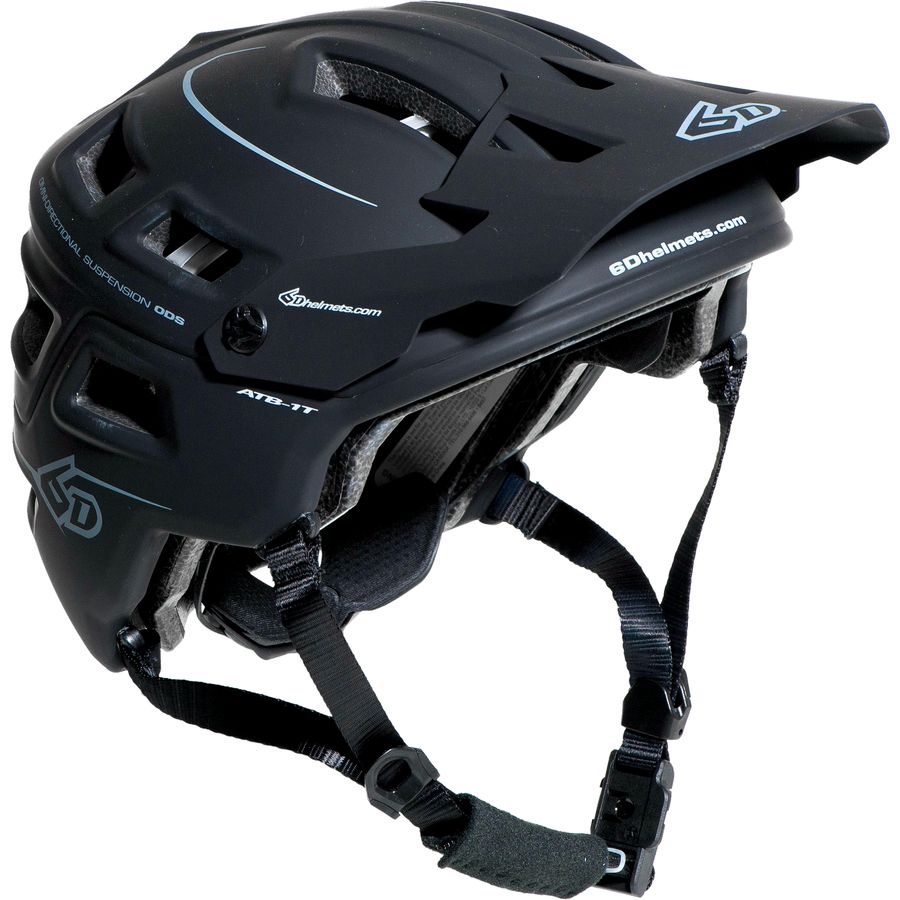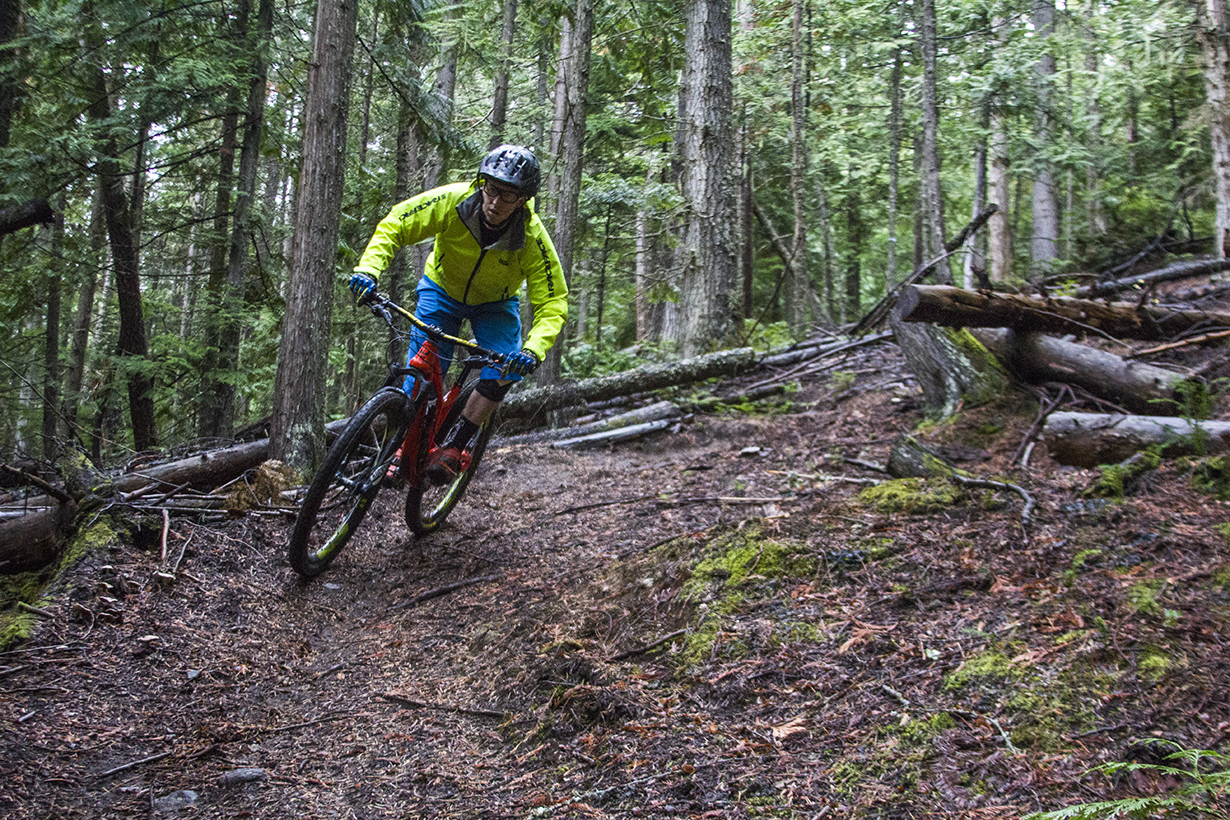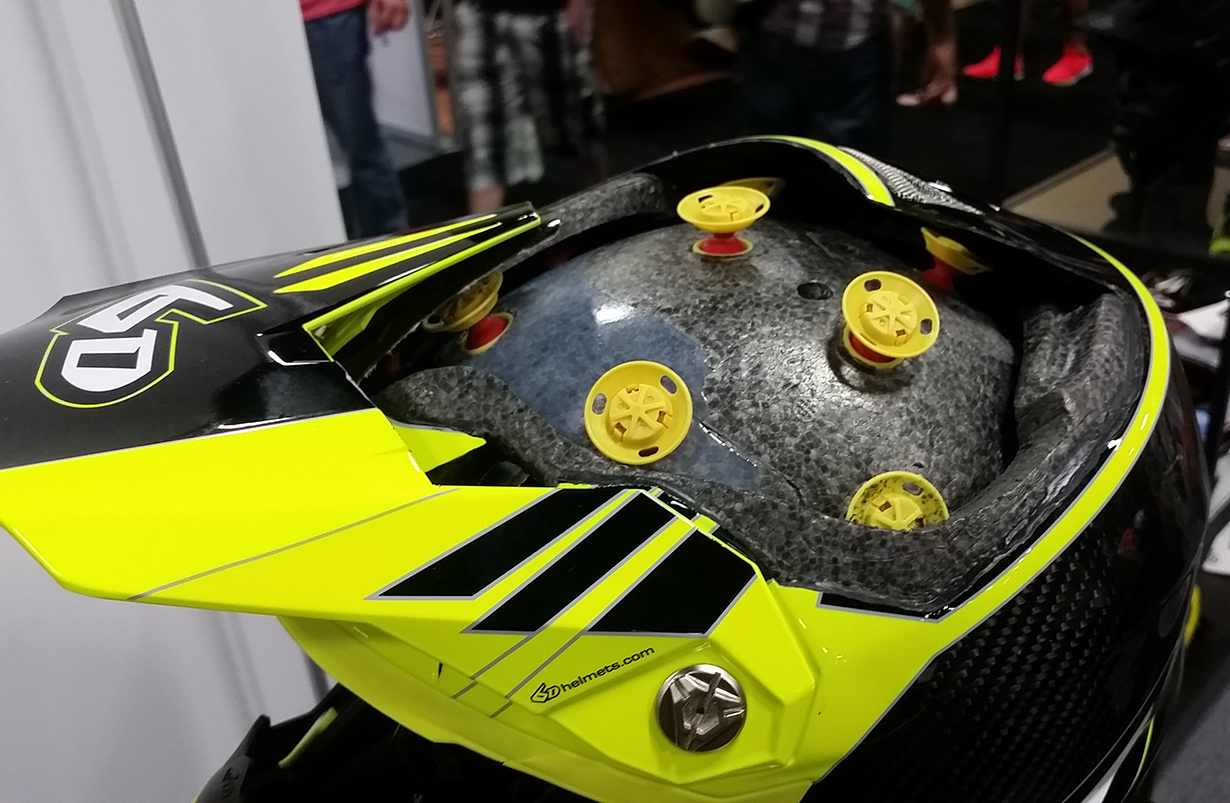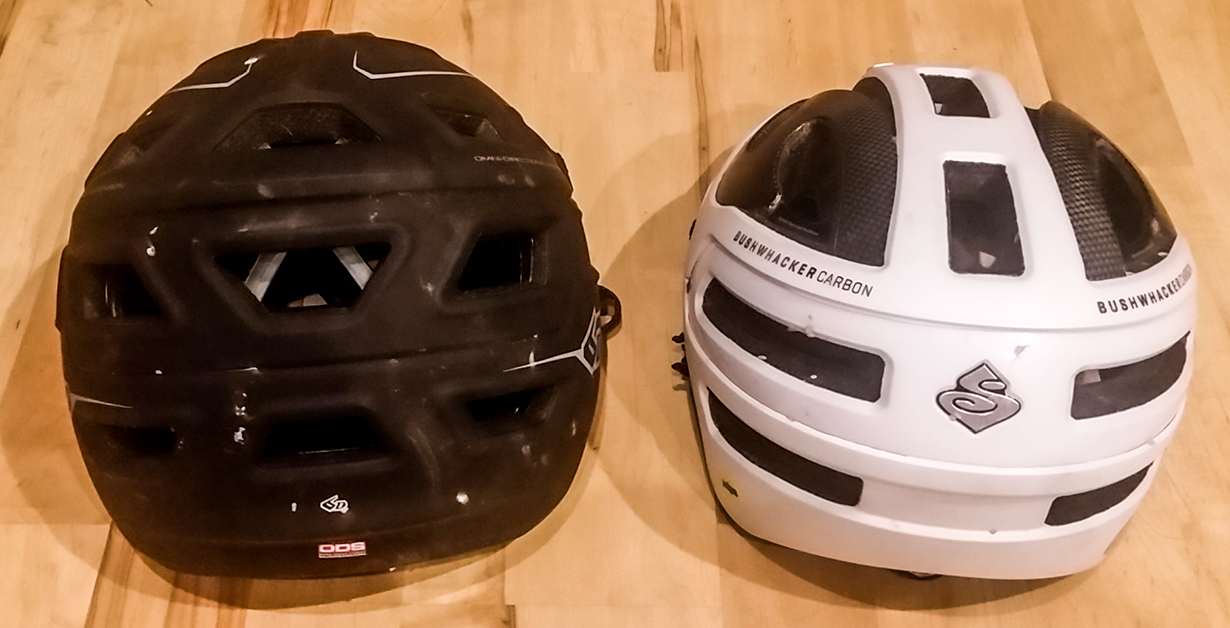
6D ATB-1T Helmet
Size Tested: Medium / Large
Color: Black
Shell Material polycarbonate
Impact Foam: EPS
Ventilation: 15 vents
Blister’s Measured Weight: 496 g
Reviewer: 5’9” 155lbs, Head circumference: 57 cm
Price: $225
Test Location: Northwest Montana, British Columbia
Days Tested: About 15 rides
Intro
6D is a relatively new company that’s offering a small lineup of bike helmets (as well as some moto oriented lids). For now, they just offer a full face and a trail helmet – the imaginatively named ATB-1T. I’ve been trying out a number of different helmets this fall, and I had the opportunity to put some quality time in 6D’s trail helmet.
The 6D helmets are interesting because, well, they’re actually different. The vast majority of helmets on the market are pretty similar. Some vent a bit better, some have MIPS or other similar safety features, and some companies seem pretty content to just change the color scheme every year and call it good. But at their heart, most of those helmets are just chunks of expanded polystyrene, and there’s a good chance that many of those helmets are coming out of a small handful of factories in Asia.
The 6D helmet is one of a very few helmets on the market that’s legitimately different. Yes, it’s still based around an expanded polystyrene shell, but, well… read on.
Normal Helmet Construction
At the risk of blathering on about the obvious, normal helmets are premised on the ability of expanded polystyrene (EPS) to break. You smash your head into the ground, and the EPS cracks, deforms, and otherwise contorts itself to dissipate the impact.
In a linear impact, brain injuries happen when your head decelerates too quickly. To put it scientifically, your brain sloshes up against the inside of your skull, and bad things happen. Extending the deceleration of your head by a few microseconds matters a lot, and it can make the difference that keeps you from living out the rest of your life being fed soft foods in a dimly lit, extended care facility that quietly plays smooth jazz 24 hours a day.

A newer area of brain injury study, but certainly a relevant concern, is rotational impacts. We tend to think of crashes that involve smashing one’s head straight into the ground or a tree. But lots of crashes involve oblique impacts that will introduce a rotational “jerk” to the head. This has the potential to cause the skull to rapidly rotate while the brain’s rotation lags behind – basically, conservation of momentum is bruising your brain. There’s a variety of systems that try to address this issue, with MIPS being the most common. MIPS introduces a slip plane in the helmet to (theoretically) allow the helmet to rotate under an angled impact, thus preventing your head from rotating as much.
What’s Different with the 6D?
6D took these basic concepts of helmet safety and redesigned the helmet from the ground up. Essentially, the 6D helmets have a helmet within a helmet, with each layer connected by a web of rubbery pillars. 6D calls this an “omni-directional suspension” (ODS), and it’s the only helmet I’ve seen that’s using a design like this. Here’s a picture of a cut away 6D helmet; you can see the inner and outer EPS layers, with the ODS pillars in between.

Each layer is still comprised of relatively traditional EPS, mainly because, despite the fact that it’s been around forever, EPS remains one of the best materials to dissipate linear impacts – since EPS is easy to work with and not too expensive, it’s an obvious choice. The EPS layers in the 6d helmet, however, are quite a bit thinner than what you find in “normal” helmets.
So essentially, each layer of the 6D helmet works more or less the same as a “regular” helmet, but aside from the fact that there’s two layers, those layers can float a bit in relation to each other due to the ODS system. The inner shell can move in any direction relative to the outer shell – it can twist, and it can compress towards the outer shell. The idea is that constructing the helmet with two layers can better handle a wider range of linear impacts while also addressing rotational impacts at the same time.
The basic premise of different layers that allow the helmet to handle a wider variety of impacts isn’t a new one – Kali has some helmets with different types of EPS to address lower and higher speed crashes. But 6D is the only company that I know of that’s physically separating those layers with elastomers.
So Is it Better?
Quantifying which helmet is actually safer is pretty tough. Unfortunately my garage lacks a million dollar testing apparatus, most companies don’t publish their test results, and I’m unwilling to personally run my head into walls in the name of science.
All that said, the 6D seems to have a couple of logical improvements. First, two shells with elastomer bumpers in between them sure seem like they’d protect better in a big, hard crash. Second, the 6D also seems like it’d fare better in low speed crashes – the elastomer bumpers compress with relatively little force, so the 6D starts absorbing impacts a lot earlier than other helmets that need to reach the (much higher) threshold of force that’ll crush or deform the EPS.
For rotational impacts, I have a harder time speculating which system is best. I can make a bunch of arguments against slip plane system like MIPS – it might bind in a crash, it arguably doesn’t do anything that the natural slippiness of my hair and scalp doesn’t already do, etc. The 6D doesn’t rotate as easily as a MIPS liner, but I’m not sure if that’s a good thing or not (or if it even really matters). So, cutting to the chase, I don’t have enough data to declare (or even speculate on) a winner for rotational impacts. But each system addresses the issue, and 6D as well as Mips have both run tests that indicate an improvement over helmets without those systems.
The one safety concern I have about the 6D is that it’s noticeably larger and heavier than any other half shell helmet I’ve ever used. At just under 500g, it’s around 150 grams heavier than an average half shells, and visually, it’s a big helmet. Aesthetics aside, there is an argument that a larger helmet will introduce additional torque on the head in a crash. Scientifically, there seems to be some debate as to how much that actually matters (if at all), so for the moment, I’ll just leave it as one potential area of concern.
For reference, here’s a picture of the 6D (left) next to a Sweet Protection Bushwhacker (right). Both of these helmets are the same size (M / L), and the Sweet Protection extends a little lower on my head.

On the trail, I can’t say I really notice the size or weight that much – it’s noticeable when I first put it on, but I’ve forgotten about it by the time the trailhead is out of sight. Although I’m reminded of it periodically by my asshole friends, who have taken to calling me “toadstool.” Purely from an aesthetics standpoint (which is kinda the worst basis for helmet shopping), the 6D probably looks best on people with bigger heads.
While the size of the trail helmet might turn some people off, I think 6D’s full face offering could be a tough one to beat – it has all of the same safety features, and a slightly bulkier helmet usually isn’t as big a concern when downhilling.
NEXT: Other Features, Etc.

“he one safety concern I have about the 6D is that it’s noticeably larger and heavier than any other half shell helmet I’ve ever used.”
after seeing how huge they are compared to my smith forefront and tld a1 that also kept me away from giving 6d a try! Seems like it would be a little cumbersome to handle while riding!
I’m also a little skeptical about some huge promises of safety without proven data, in the end all helmets passed the required standards before reaching the market, yes you can say why not and go for it, I’d probably invest in one if wasn’t for how big they are in the current version!
All new tech to improve safety are welcome in my mind, and I will certainly keep my eyes on 6D as they move forward and improve!
Nice review, as usual, Noah. MIPS has failed to win my heart or mind. Love your comment about hair providing a decent slip plane.
I kind of agree with Marcel. I’m not quite sure the 6D concept is ready for prime time yet, but I suspect that version two will be impressive.
I do have a couple moto friends that swear by their 6D helmets, though.
I have the EVO of this helmet and if that is what you expect to be version 2, I confirm that it actually is better in many ways than the helmets I have used so far.
I have the XL and yes it is big, but so were all my helmets and the weight is not noticed when on the head, only on the kitchen scale.
Excellent helmet.
Not much bigger or maybe not bigger than my POC Tectal Race that I just crashed in and now have to wait a least one more month efore doctor think I can go ride bumpy trails again if I do not want to damage my brain more than it is. Less vented maybe but cannot comment before I actually have been using it.